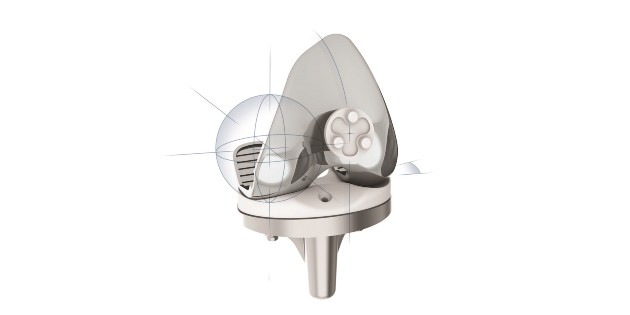Results of an Independent Multicentre Outcomes Study for the SAIPH Knee

The concept for the Forever Active Forum 2018 was originally proposed in 2015 at the start of the SAIPH® Knee multicentre study. Its purpose was to announce the results of the study which at the time was a very bold idea! We are delighted to report that the concept was good and the results excellent.
Basis for the multicentre study
In 2014, data from the first clinical step of the SAIPH® Knee new technology introduction was highlighting excellent outcomes for patients1,2,3. It was time to prepare for the second clinical step and set up a multicentre trial exposing the technology to a wider and independent community. Led by Jon Baré, the study was carefully defined with sufficient numbers of surgeons and patients to allow adequate statistical analysis.
While some participating surgeons continued to use their existing device for a series of cases before using SAIPH® for all patients, three surgeons committed to collect data in a randomised controlled trial (RCT) between the SAIPH® Knee and their own existing device so that they could determine by objective evidence whether or not the SAIPH® Knee improved their practice. The direct comparison of a well-practiced procedure to the learning curve of another promised to be hugely insightful!
This article highlights the study results presented by Jon Baré at the Forever Active Forum4; details of surgeons’ comparative data were very enlightening and will feature in future articles.
Study details
Between December 2015 and June 2018, 484 patients had been enrolled into the study and had received a SAIPH® Knee at one of 16 sites (13 surgeons).
At the time of the Forever Active Forum, 287 patients across 11 sites (8 surgeons) had completed their 1-year postoperative review. Demographics were indicative of a standard TKR population: average age was 67.7 years (46-88); 51% were male and 49% female; mean BMI was 31 (15-59); and 32% had significant comorbidities.
The study collected patient reported outcome measures (PROMs) including KOOS, OKS, UCLA Activity and EQ5D-5L and range of motion preoperatively and 1 year postoperatively. The Forgotten Joint Score and 3 satisfaction questions were taken at the 1-year interval. Surgical details, comorbidities, complications, radiological assessment were also completed.
Results
From 484 SAIPH® Knees implanted, one was revised for stiffness due to excessive scar tissue, one for valgus instability and one knee was pending revision for stiffness, giving a total of 3 failed knees (0.6%). Complications were comparable to other TKR populations.
For the 287 patients reviewed at 1 year, range of motion was mean 116o and median 120o (range 80o to 145o) at the 12 month time point. In terms of the learning curve, familiarity with the ball-and -socket knee concept resulted in a more optimised range of motion. This was a particular topic of conversation at the Forever Active Forum, which will feature in a future article.
A real highlight was the high degree of satisfaction: 94.6% of patients described the results of their operation as ‘good’ to ‘excellent’. When asked about their perception of success, 96.5% said their problems were ‘better than before surgery’ with 91.9% saying ‘much better’. The median Forgotten Joint Score was a hugely impressive 75!
In terms of consistency, these results were reproducible for all surgeons: median satisfaction for every surgeon’s cohort was greater than 9/10. In addition, all PROMs outcomes and satisfaction scores compared well to those from the inventor surgeons’ 5-year data5.
Conclusions
The SAIPH® Knee is associated with improved outcomes across all metrics. Data for this large independent multicentre study is comparable to the inventor surgeons’ results and between multicentre study participants. The seemingly ubiquitous patient satisfaction stands out given the numerous accounts of ’20% of TKR patients are not satisfied with the results of their operation’ – this is not the case for SAIPH® Knee patients!
Results from the first clinical step continue to deliver excellent outcomes5; the SAIPH® ODEP ratings6 are on track and showing better outcomes than others that already have a 10A* rating; registry data continues to demonstrate superior performance of the SAIPH® Knee when compared to all other technologies7. The collective data, now with the excellent report from the second clinical step multicentre study, is substantial and positive enough for discerning surgeons who would consider changing their practice based on suitable evidence to consider the SAIPH® Knee.
References
1.Shimmin A, Martinez Martos S, Owens J, Iorgulescu AD, Banks S. Fluoroscopic motion study confirming the stability of a medial pivot design total knee arthroplasty. The Knee. 2015; 22(6): 522-526.
2.Shah S et al. The Influence of Implant Design on Sagittal Stability of Total Knee Replacement. Presented at the AOA ASM, Brisbane, 2015.
3.Walter et al. SAIPH® Medial Ball and Socket Knee: 2-year Follow-Up of the First 200 Patients. Presented at the AOA ASM, Brisbane, 2016.
4.Baré J et al. Results of a Multicentre Study. Presented at the Forever Active Forum, Melbourne, 2018.
5.Katchky A et al. Minumum 5-year Follow-Up of the SAIPH® Medial Ball and Socket TKR. Presented at the AOA ASM, Adelaide, 2017.
6.SAIPH® Knee ratings: Orthopaedic Data Evaluation Panel (ODEP). Latest ODEP ratings can be found at www.odep.org.uk
7.AOA National Joint Replacement Registry, Hip and Knee Arthroplasty, Annual Report 2017.